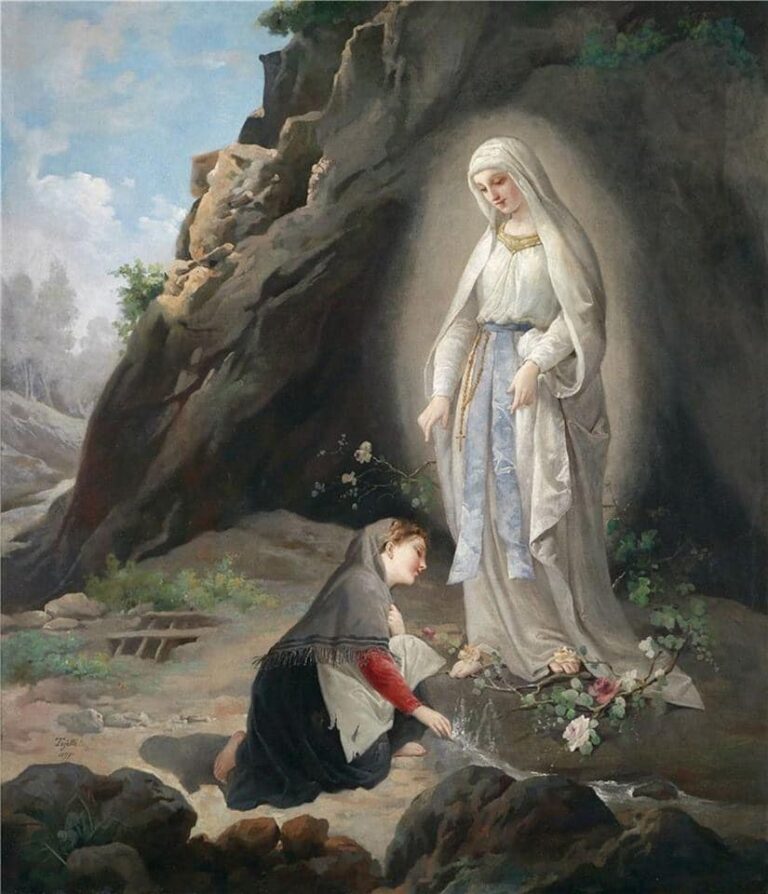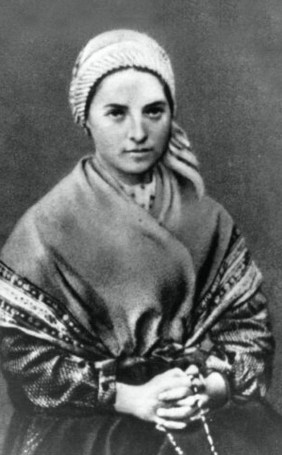A miraculous vision

Saint Bernadette Soubirous, born on January 7, 1844, in Lourdes, France, is best known for her visions of the Virgin Mary at the age of fourteen.
Born into a poor family, Bernadette faced many hardships from an early age. Her father, François Soubirous, struggled to find steady work, and the family lived in a small, damp home. Bernadette herself was frail and suffered from poor health, experiencing frequent illnesses throughout her childhood. Despite the hardships, she was known for her deep devotion to the Catholic faith, despite her lack of education.
The miraculous events that defined her life began on February 11, 1858, when Bernadette went to collect firewood in the grotto of Massabielle, near Lourdes and witnessed a vision of a “beautiful lady” dressed in white, with a blue sash, yellow roses at her feet, and a rosary in her hands.
Bernadette initially hesitated but returned to the grotto several times over the following weeks, where she continued to see the apparition, which she later identified as the Virgin Mary. The lady instructed Bernadette to tell the priests to build a chapel on the site and to ask people to come in procession. She also revealed a spring of water, which was later believed to have miraculous healing powers.
At first, the local clergy and authorities were sceptical of Bernadette’s visions, and she was subjected to intense questioning, but she remained unwavering in her testimony. The apparitions continued for the next few weeks and thousands of people began to gather at Massabielle to witness the phenomenon. Bernadette’s humility and simplicity won her the trust of many, and her courage in standing firm against growing opposition was testament to her inner strength and faith.
One of the most significant moments occurred when she was asked by the apparition to drink from the spring, which until then had been invisible. The water was initially muddy, but after a short time, it became clear. The spring continues to be a source of healing for many pilgrims to Lourdes, where millions go every year seeking physical and spiritual healing.
After the apparitions, Bernadette faced great challenges. Despite the increasing number of believers and the Church’s eventual recognition of the events, Bernadette was not celebrated by all, and she faced public ridicule.

In 1866, she entered the Sisters of Charity of Nevers, where she lived the rest of her life in seclusion. She took the name Sister Marie-Bernard and spent her years in prayer and service to others. She suffered from ill health for much of her life and passed away at the age of 35 in 1879 from tuberculosis.
Saint Bernadette’s life teaches lessons of humility, faith, and perseverance. Bernadette’s humble life and unwavering faith in the face of adversity have made her an enduring symbol of piety and perseverance. Despite her youth and humble background, she became a vessel for the Virgin Mary’s message, and her unwavering dedication continues to inspire those who seek spiritual solace and strength.
Bernadette was canonised on December 8, 1933, in recognition of her holiness and the profound impact her visions had on the world. Her legacy lives on in the pilgrimage site at Lourdes, which is still a place of healing and faith for millions of the faithful.
We encourage you to share and use this material on your own website. However, when using materials from Majellan Media’s website, please include the following in your citation: Sourced from www.majellan.media
